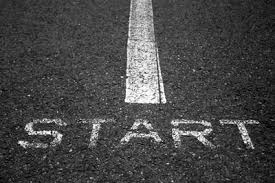Remember that the first 2 minutes of a presentation – when you’re probably at your most nervous are also are the point at which you have the audience’s fullest attention, experienced presenters and salespeople learn how to use this ‘golden time’ to full effect, because they know that when all else is forgotten, the audience can’t help but remember the first bit.
I don’t generally recommend fully scripted presentations unless you absolutely have to for regulatory or legal requirements, but I would recommend getting your start down to a perfect tee. Why? For the reasons outlined above. You have your audience at your mercy. They’re still settling down, arranging their pens, smiling at people they haven’t seen in days, they’re not really expecting to get much out of the next hour, even less the first bit that is usually fully of apologies, agendas and dull stuff. Save that for later. Hit them now with a proper, Shakespearian prologue. Shakespeare knew that his audiences (like yours) are impatient, unforgiving and restless. You have to grab them at the very start, before the lights go down. Once you’ve done that, you’re flying into the sunniest of clear skies then all you have to do is tell your story. Your word-perfect start has shut them up, grabbed their attention, piqued their interest and put you in control.
much out of the next hour, even less the first bit that is usually fully of apologies, agendas and dull stuff. Save that for later. Hit them now with a proper, Shakespearian prologue. Shakespeare knew that his audiences (like yours) are impatient, unforgiving and restless. You have to grab them at the very start, before the lights go down. Once you’ve done that, you’re flying into the sunniest of clear skies then all you have to do is tell your story. Your word-perfect start has shut them up, grabbed their attention, piqued their interest and put you in control.
Here are 10 other things you can do to help you start really well in your next presentation –
1. Contact as many people as you can before the date and ask them what they want to get out of the session, what they’d like to know and what they don’t want. Even if they don’t respond, they’ll remember you asked them and it will warm you to them.
2. Get a list of names before the event and memorize as much of the list as you can, then fit faces to names as they walk in to the room.
3. Meet people (even if you know them) as they come into the room, shake hands, have a brief chat with them to help show your confidence and ‘break the ice’.
4. Tell them who you are and why you’re there (I’m the person who knows this system as well as anybody in the world and I’d like to help you learn how to make the most of this excellent piece of software…’).
5. Tell them what they’re going to get out of being here (You’ll get an interesting, useful and memorable set of hints and tips that will help you to make the most of the investment you’re making….).
6. Tell them how long you’ll be and that if they ‘do with patient ears attend…’ they’ll get lots out of the session. (I’ll talk for 20 minutes, and you’ll see how useful this product will be for you…).
7. Tell them what you want them to do. (Please feel free to ask questions as we go through and help me to give you what you need, though if I’m going to cover the point later I may ask you to be a little patient with me…’).
8. Match your energy to the energy in the room (just above the energy level of a quiet room and just below that of a noisy room).
9. Take them through the ‘story structure’ for the presentation so they see your logic at the start.
10. Do your introduction to a blank screen at the start so they focus on you and use the story structure slide for the ‘bridge’ to act 1. Then you’re in control and ready to go.
Good luck, and here’s a link to download our amazingly beautiful (and completely free) collection of other hints and tips to help even the best speakers make the most of this game of ‘snakes and ladders ‘ we all play.







